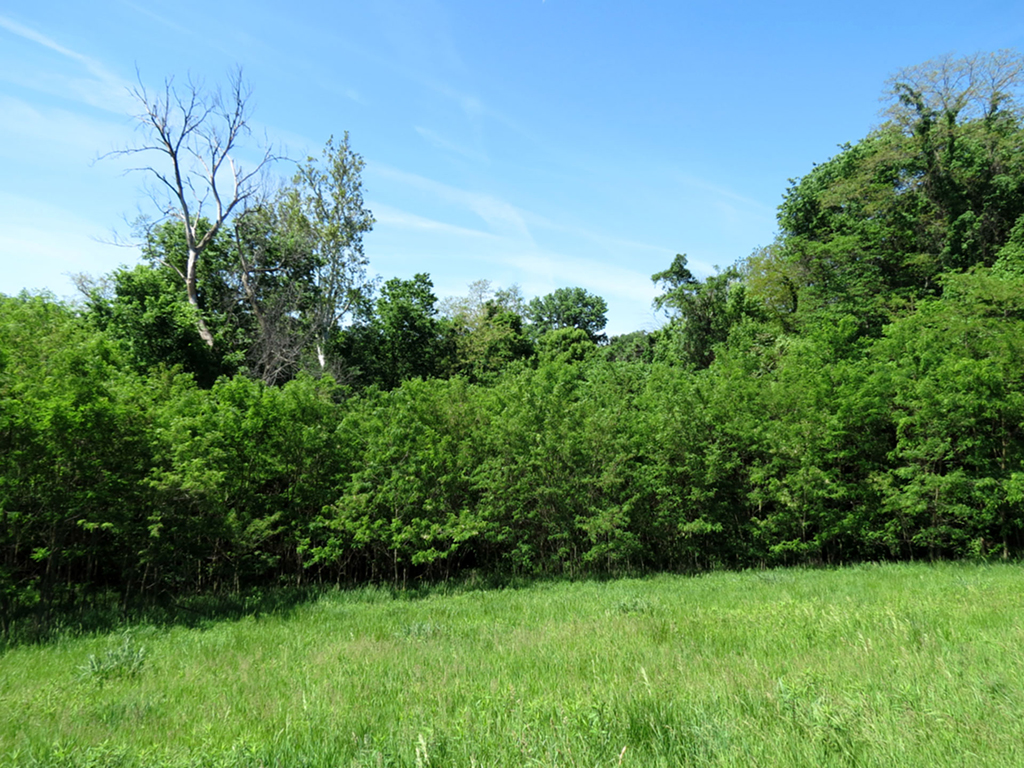



Upon their arrival to Illinois in the late eighteenth century, the Whitesides and other settlers were simultaneously impressed by the land’s natural beauty while also struck by the desolation of settlement and natural and Native danger. Settlers were therefore immediately alienated from the land and sought solutions to this alienation. They thus began the process of “taming” the wilderness by changing it.
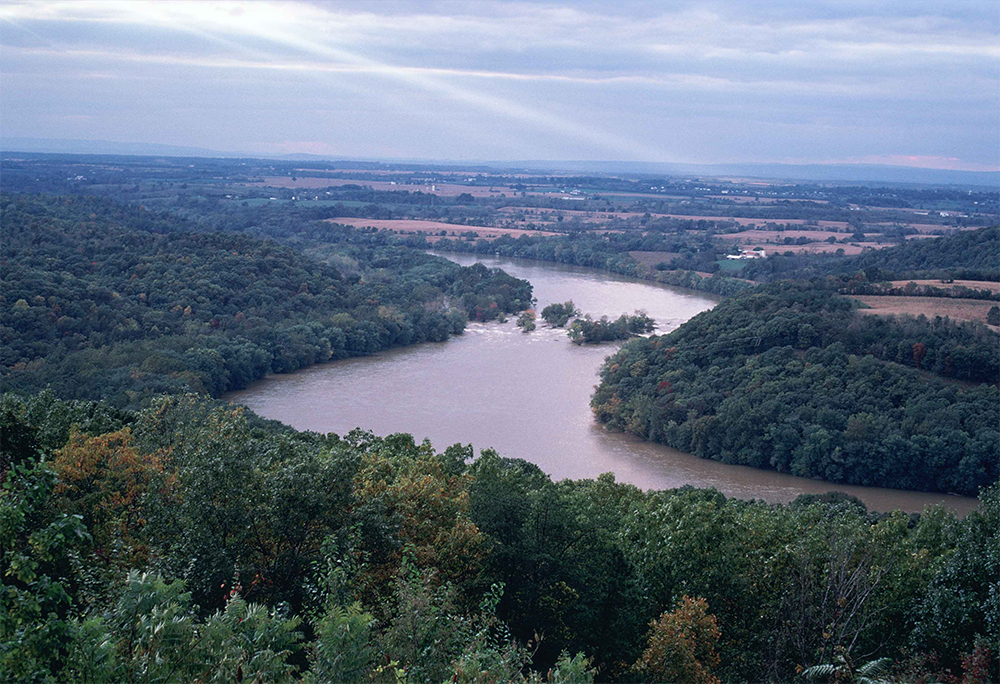
Writing in 1855, John Reynolds recalls his reaction to crossing the Ohio River into Illinois in 1800, aged 12:
[W]e reached the noble and beautiful Ohio river, in the evening. The river was full up to the top of the banks, and exhibited a magnificence and beauty, that was the admiration of our whole traveling caravan. We had often read, and heard of the beauty and splendor of this famous river, but it surpassed the liveliest and brightest conceptions we had formed of it. But the pleasures we enjoyed at the sight of this beautiful stream, soon vanished ; when we cast our eyes across it, to the dreary waste of wilderness that extended almost indefinitely from its north western shores. We were encompassed with a wilderness, filled with savages and wild beasts, and extending on the North to the pole itself, and on the West to China, except a few straggling settlements on the Mississippi and the Wabash rivers... The scene was appalling and distressing. My parents, and six children, myself only twelve years old without assistance camped in a wilderness.1
The Ohio and the Mississippi were far larger rivers than most settlers had ever seen before. The creeks of the foothills of the Appalachians seemed like streams in comparison.
Yet the wonder at the river’s size does not last. Notice the words Reynolds uses to describe his alienation: waste, wilderness, appalling, and distressing. Though able to appreciate the natural beauty, Reynolds was more concerned about connecting to civilization than escaping from it. He was not interested in how the “wilderness” was “unspoiled by man.” We must remember, however, that this passage is a middle-aged Reynolds recalling how he felt a half century earlier. Reynolds by himself does not indicate the feelings settlers had at the time of arrival. After all, it seems unlikely that 12-year-old Reynolds was keenly aware of China as the closest civilization to the west.
Near the start of their journey, young Reynolds asked the man they hired to take them to Kaskaskia how far it was to the next town. The man replied that it was their destination, Kaskaskia, 110 miles away. The Reynolds encountered many difficulties on their way, starting with tornado damage, which Reynolds called both a hurricane and a tornado. Trees had fallen onto the road along the way, requiring Reynolds’ father and the hired man to cut through the fallen trees to clear a path. They also encountered snow “at the scene of the tornado.2
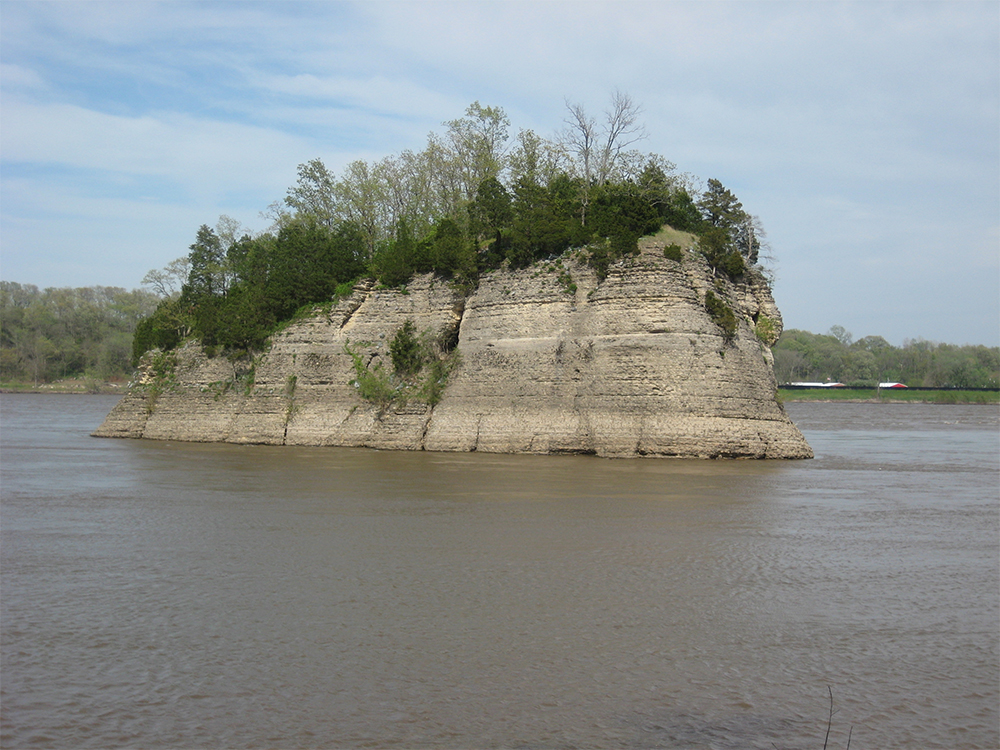
Reynolds’ described feeling of isolation and fear in the wilderness are not unique to him. Though he faced difficulties, Reynolds was spared much of the hardship faced by other settlers who traveled in the 1780s and 90s through the wilderness. He writes of a Mr. Huff, married to a widow with children from her previous marriage, who traveled to the American Bottom during the American Revolution after Clark’s expedition. While camped for the night near the Tower Rock on the Mississippi south of Kaskaskia, their party was attacked by Indians. One of Mrs. Huff’s sons was killed, and the survivors ran to the boat to escape. Mrs. Huff did not make it to the boat. Reynolds continues:
Mrs. Huff was mangled in a shocking manner before the eyes of her husband and family. She was cut open and quartered and the Indians drank her blood. This was the reason that her son, John Murdoch, who was a very conspicuous character in the early times of Illinois, swore vengeance against all Indians, and could scarcely be restrained from killing them in time of peace as well as in war.3
As with most stories of Indian violence, it is impossible to know if the gory details actually occurred. Regardless if they are true, their inclusion reveals how strongly Anglo-Americans feared Indians on their way to the American Bottom.
Perkins also found this in her study of frontier Kentucky. Settlers recounted that in first traveling through the land, they felt unease at the lack of familiar signs of “civilized” habitation, such as houses and fences.4 When they did see signs of human habitation, it was often evidence of continued Indian subsistence activities, such as sugar camps,5 or more distressing, the remains of fellow settlers following Indian attack. Asa Farrar saw a boat landing with “a dead woman, two wounded children, and a dead horse, on board,” with a surviving infant still suckling the dead mother’s breast.6 The Whitesides may have seen the aftermath of Indian attacks themselves on their journey, but at the very least they had to pass through a dangerous, Indian landscape. As Perkins writes about Shane’s interviews, “Although a few migrants commented on the natural beauty of the wilderness, most remembered it as an eerily alien cultural space.7
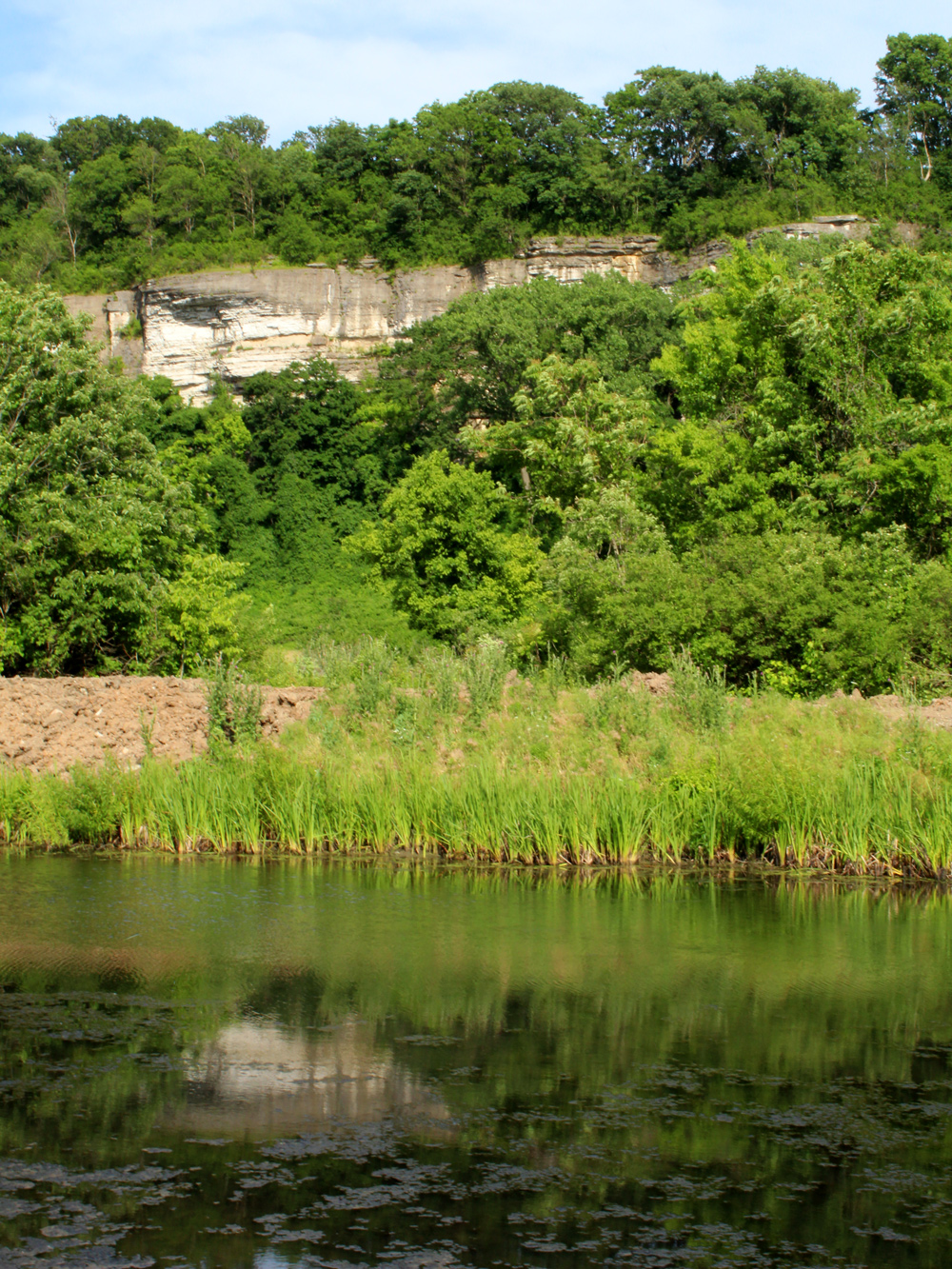
After four weeks of travel through largely unsettled southern Illinois, Reynolds and his family reached Kaskaskia. There, he was once again struck by natural beauty:
When we approached the high Bluffs east of Kaskaskia we halted our traveling caravan, and surveyed with wonder and delight the prospect before us. It was in the spring, and the scenery was beautiful.
The eye ranged up and down the American Bottom for many miles, and the whole landscape lay, as it were at our feet. The river bluffs rose two hundred feet or more above the bottom, and the prairie lay extended before our view, covered with cattle and horses grazing on it. The Mississippi itself could be seen in places through the forest of cotton-wood trees skirting its shores, and the ancient village of Kaskaskia presented its singular form and antique construction to our sight. The ancient Cathedral stood a venerable edifice [sic] in the heart of the village, with its lofty steeple, and large bell — the first church bell I ever saw. Around the village were numerous camps, and lodges of the Kaskaskia Indians, still retaining much of their original savage independence.8
Anglo-Americans still marveled at natural beauty even when they first arrived in the alien landscape. Yet part of Reynolds’ exaltation of the landscape around Kaskaskia is a pastoral celebration of man’s “proper” relationship with nature: namely the grazing cattle and horses. Reynolds was able to enjoy nature because he was in a settlement, albeit a French and Native American one.
Yet while he enjoyed the scenery, Reynolds was not at ease among the unfamiliar culture of the French and Native Americans:
This was our first sight of a kind of quasi civilization we saw in Illinois, and it was so strange and uncouth to us, that if we had been landed on another planet, we would not have been more surprised.9
Reynolds then follows by a description of “the Kaskaskia Indians,” one of the few remaining Illini tribes allied with the French. He describes their “savage customs” of “gaudy and fantastic attire with paints.” They had feathers in their hair and horns attached to their heads. “They galloped in this fantastic dress around our encampment.”10
Not just Indians were unfamiliar. Reynold also found French customs strange:
[T]he French citizens, down to 1810, or thereabouts, called the United States, America, and did not consider themselves dans l’ Amerique, as they termed it. It seemed strange to my ear to hear the French, in 1800, speak of America as a different country than theirs on the Mississippi. In fact, the people, their dress, language, houses, manner of living and doing business were so different from the Americans in the States that it almost made us believe we had traveled out of America.11
Reynolds had encountered an unfamiliar culture with limited means to connect to his own, Anglo-American, protestant ideals. His father had initially been interested in moving to Spanish Louisiana across the Mississippi, but decided to stay in the American Bottom after learning that the Spanish authorities required all Louisiana citizens to practice Catholicism.12 Reynolds describes how he and his family felt in their new home:
We made our habitation east of Kaskaskia river in the forest amongst the high grass, and the wolves and wild animals were howling and prowling about us every night. We enjoyed not the least semblance of a school, or a house of worship, or scarcely any other blessing arising out of a civilized community.13
Reynolds was also feeling at odds with the natural surroundings. Much as the “savage” Indians surrounded their encampments, so too were the wolves and wild animals. The solution to this alienation is seen in this description: the building up of civilization through houses and schools.
Many of the Scotch-Irish settlers were accustomed to cultural alienation. Their ancestors lived among an Irish majority unhappy with their presence. In America they were relegated to the frontiers of the Carolinas and Virginia where they began to form their resentment for Indians, especially after the French and Indian War and the American Revolution. Throughout all this, the Scotch-Irish and their related ethnic groups (such as the Whitesides) passed down a cultural tradition of feeling threatened by other ethnicities.14
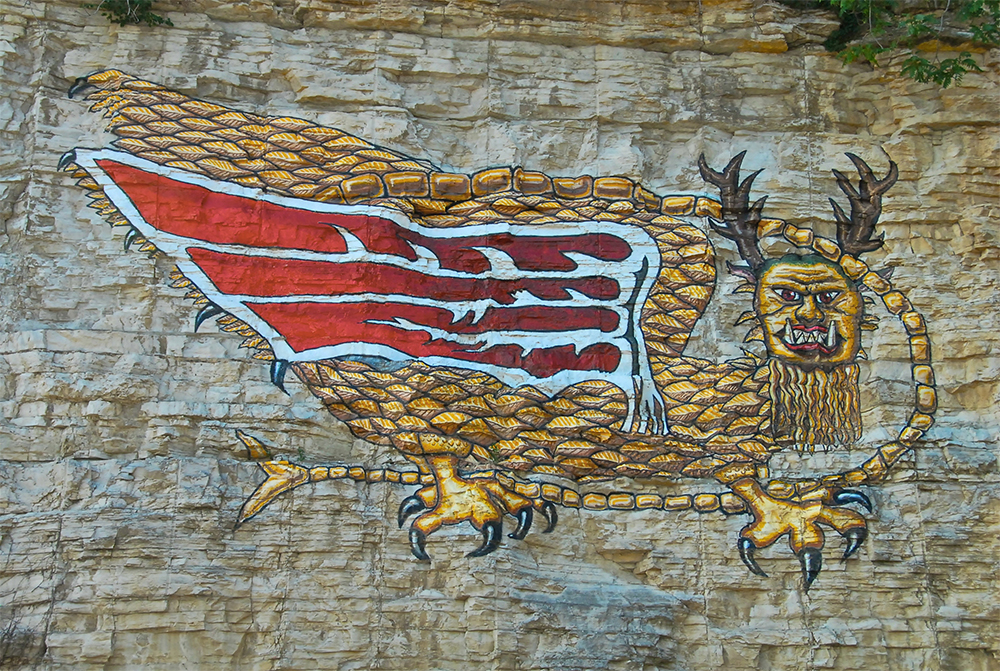
In Kentucky, continued signs of Native habitation added to their worries and alienation.15 The settlers in the American Bottom had ample evidence of Native culture in addition to the living remnants of the Illini and the attacking tribes from the north. Anglo-Americans were living on top of the ruins of the Cahokia civilization. The most visible signs of this civilization were the large earthen mounds on both sides of the Mississippi, but there were other signs as well, such as the painted Piasa Bird in modern-day Alton. When the first Europeans saw the Piasa painting, Jacques Marquette and Louis Jolliet, Marquette said that they both felt afraid, describing it as a painting of two monsters. Yet Marquette was impressed by the painting’s quality, writing, “[T]hese 2 monsters are so well painted that we cannot believe that any savage is their author.”16 Anglo-Americans had a similar reaction to the mounds, finding it difficult to believe that they were made by Native Americans or their ancestors. They would develop their own theories of their origin.17
These cultural fears were reflected in their feelings about the unfamiliar prairies. Most settlers from the upland south were unaccustomed to the seemingly endless fields of grass. While many were impressed by their beauty, settlers were wary of prairies. The towering grasses were difficult to navigate and full of biting flies that occasionally killed horses, and prairie fires spread rapidly and stretched for miles.18 Anglo-Americans recognized that many of the fires were started by Indians and tried to prevent them. Prairie burnings could be deadly; two men were caught in a prairie fire in the American Bottom and tried to take refuge under their cart. They did not survive.19 Anglo-Americans also believed, incorrectly, that prairies or, “barrens,” were infertile and unsuitable for farming. Conventional wisdom held that, the larger the vegetation on the land, the more fertile the soil. Thus, forestland was the most fertile.20
Anglo-Americans were also wary of marshy bottomland, common in the American Bottom. They believed standing water released foul gasses that caused disease. In reality, the diseases, particularly malaria, were spread by mosquitos common in standing water. As a result, Anglo-Americans favored land they accustomed to: forests.21
Reynolds, however, was not initially familiar with perhaps the most alienating aspect of Anglo-American life in the American Bottom: Indian warfare. After all, Reynolds had arrived five years after the 1795 Treaty of Greenville, which had led to less frequent Indian attacks.
Yet the Whitesides and other early settlers were intimately familiar with Indian violence. Shortly after arriving in 1793, William Bolin’s father led an attack on a Potawatomie band, killing the chief’s son. The chief responded in kind by killing his son, William Bolin’s younger brother Thomas. The Whitesides then led a larger raid on an Osage settlement, killing at most 60 men, women, and children in 1795 in the Battle of Canteen Creek.22
The Whitesides were not alone in suffering and committing violence. Mr. Huff had only settled in the American Bottom for a few years when he was killed by Indians on the road between Prairie du Rocher and Kaskaskia.23 James Flannery was shot and scalped by attacking Indians in 1783 after building the fort that would become Whiteside Station.24 Because of spotty records particularly for the very early settlement era, it is difficult to estimate how many Anglo-Americans were killed in Indian attacks. Baldwin mentions an estimate that 10 percent of the inhabitants of the American Bottom were killed between 1786 and 1795,25 but I am skeptical that any quantitative estimate is even possible.
What concerns my argument is how Anglo-Americans reacted to the violence. Reynolds’ writing gives us an idea:
The Cherokees, the Shawnees, and other hostile Indians, were dreaded around the frontiers, in olden times, as much as the Asiatic cholera is at this day [1887]. There was scarcely a family in the West but could mourn the loss of some of its number. And many times the evenings were spent in narrating the horrid tales of the slaughter of women and children as well as of their fathers and husbands…
The Indian depredations were severe on the Americans in these early settlements which compelled the inhabitants to erect stations or block-house forts all over the country for their protection.26
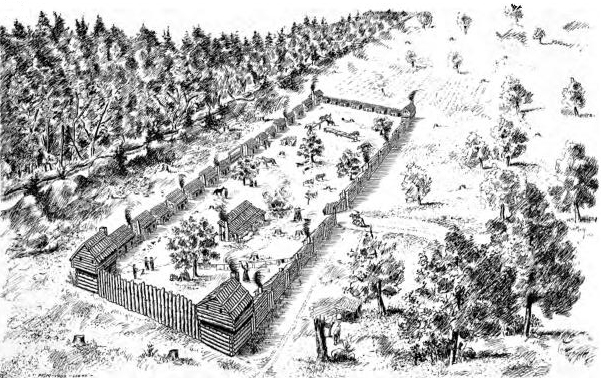
Whiteside’s Station was among the many stations built throughout the American Bottom in the 1780s and 1790s; the Anglo-American reaction to Indian violence and cultural alienation.27 They were not unique to Illinois; stations were common throughout Kentucky and Ohio during the bloody Indian warfare of their early settlement. As the settlers from Kentucky migrated to Illinois, they brought the station with them. Each station typically composed of related family groups. As Perkins writes, stations were “a means of defense while securing possession of the land.” Yet more than defense, stations blurred the line between the military and civilian population of the frontier. Most crucially, “[s]tations, as compact militarized settlements, helped white settlers seize and colonize the aboriginal landscape.”28
Not every Anglo-American lived in stations. Some lived in the French towns of Kaskaskia, Cahokia, and Prairie du Rocher, where they were a “minority” among the remaining French in Illinois. As a result they formed their own communities including Bellefontaine and New Design, finding greater strength in numbers. However, historian James E. Davis estimates that about 334 Anglo-Americans lived in scattered settlements in what would become Monroe County, the majority of whom lived in stations. This is roughly a third or nearly a half of the 800 to 1,000 Anglo-Americans in Illinois in 1800.29
Much like the Kaskaskia Indians and wolves and other wild animals surrounded Reynolds when he first arrived, the stations created a relationship with nature in which the station was surrounded by an Indian wilderness at odds with white safety. Reynolds writes about when this threat arrived:
Sometimes these garrisons were attacked by the Indians and then was human thunder displayed in all its various forms and shapes. The Indians yelling, whooping, and firing into the fort from the outside, while the inside was energy and activity in the highest degree.30
Reynolds here uses the terms “outside,” related to the threatening Indians, and “inside,” related to the white settlers hurrying to defend themselves. Perkins talks about the use of these terms “to encompass their basic arrangements of social space.” They defined the interior as security or fortification, and outside as the surrounding and dangerous Indian wilderness.31
Settlers faced increased danger outside the stations. Young Thomas was killed when he was playing outside Whiteside’s Station. Those who first left the station in the mornings faced particular risk from Indians, who attacked the “milking parties and others first going out of the fort.”32
Families often initially built cabins outside a station and were forced to move in to a station or build one once they realized the danger from Indian attacks. Reynolds describes the experience of returning to their original home:
The most danger was from the Indians when the families left the fort for their homes in the neighborhood. They found their houses, yards, and fields out of repair and the grass grown over the yards; so that all wore a dismal appearance; and, perhaps, the blood yet on the floor or yard where a member of the family had been killed by the Indians before they moved into the fort.33
The “dismal appearance” was the return of nature to what was the family’s earliest attempt to survive in the wilderness, coupled with evidence of Indian violence. Nature and Indian violence were connected in the minds of settlers.
Stations were not large enough to allow farming inside them. Settlers had to farm outside the station if they were to have enough food to sustain themselves. Thus while one man plowed, one or two guards were “stationed outside to protect him.”34 In the minds of settlers, this in particular was an impediment to the growth of settlements in the American Bottom. This is visible in a 1790 petition signed by residents of Piggot’s fort or station, including the signature of William Bolin’s father, two of his uncles, and his cousin. Here is an excerpt:
[U]nless our principal agrievance [sic] can be removed by your Excellency's encouragement, we shall despair of holding a residence in the State we love. The Indians who have not failed one year in four past to kill our people, steal our horses and at times have killed and drove off numbers of our horned Cattle, render it impossible for us to live in the Country any way but in Forts or Villages, which we find very sickly in the Missisippi [sic] bottom. Neither can we cultivate our land but with a guard of our inhabitants equipt [sic] with arms, nor have we more Tilable [sic] land for the support of seventeen families than what might be easily Tilled by four of us, and as those lands whereon we live are the property of two individuals, it is uncertain how long we may enjoy the scanty privileges we have here…35
The petitioners go on to request property rights to land they said they improved, “at the risk of our lives,” as well as the establishment of a village “with inlots and outlots sufficient for families to subsist on laid out and established in or near the Prairie de Moriway.”
Due to the Indian threat and the illness of the sickly Mississippi Bottomland, the petitioners say they have been unable to properly cultivate crops and raise livestock; namely, subdue the land. They have been alienated not just ideologically from the land, but also materially. Without control over production of the land, the petitioners fear they will either be forced to leave or starve. The petitioners therefore ask for legal ownership to the land they have worked, giving them greater ability to take control. This petition, submitted to Northwest Territorial Governor Arthur St. Clair and ultimately received in Congress, eventually granted land rights to many of the signers of the petition, though it is unknown if the Whitesides were among them.36
English colonists in New England pointed to God’s very first commandment to man in the Bible as the proper way to relate to nature:
Be fruitful, and multiply, and replenish the earth, and subdue it: and have dominion over the fish of the sea, and over the fowl of the air, and over every living thing that moveth upon the earth.37
Puritans believed God’s commandment to subdue the earth demanded an agricultural relationship in which man held dominion over nature. They frequently used this argument in order to justify the taking of non-agricultural land from New England Indians.38 For a further discussion of how property rights related to land improvement, see Arrival Materialism.
Though I do not have direct evidence that non-Puritans in the American Bottom thought of this specific passage as they “subdued nature,” undoubtedly they were following a Judeo-Christian tradition of taking mastery over nature through agriculture. Almost all settlers were devout Christians, and John Reynolds even echoes a similar sentiment when he tries to justify the dispossession of Native Americans, arguing that God would prefer “having a greater number of the human family in existence than a few” because whites can “sustain more numbers on the same territory than the Indian mode of living will permit.”39 Though he does not reference the Bible directly, the influence is clear: agriculture and subduing the earth allows for whites to “be fruitful and multiply” and follow the will of God, unlike the Indians.
The first Anglo-American settlers in the American Bottom felt disconnected from the land. The threat of Indian violence combined with an unfamiliar cultural landscape of French towns and Cahokian relics created a feeling of cultural alienation. No matter how much they admired the views from the bluffs of the mighty Mississippi, Anglo-Americans taking refuge in stations and villages were unable to properly subdue the land as their Christian beliefs dictated. They had been alienated from the means of production.
Yet in small ways settlers began to assert control over the landscape. Though small, stations and villages added Anglo-American features to the landscape, ones that began to secure the land for their control. In Kentucky, settlers assuaged their fears of Indians by destroying thick native vegetation that Indians could hide in.40 In the American Bottom, settlers cleared the forests around stations also to prevent Indians from sneaking upon the station.41 This not only served a practical purpose, it also alleviated their alienation. Cutting down trees and changing the landscape made settlers feel like they were exerting control over the native world that threatened them.
This initial mindset of settlers had a lasting influence on how they related to nature in the American Bottom, even after Indian violence and direct influence abated and Anglo-Americans rose to dominate the land. To keep reading about how their ideology changed, see Goshen Ideology.
For more precise details of the environmental impact of Anglo-Americans upon arrival, see Arrival Materialism.
1. John Reynolds, My own times: embracing also the history of my life (Belleville: B. H. Perryman and H. L. Davison, 1855), 25.
2. Reynolds, My own times, 26 - 27.
3. John Reynolds, The pioneer history of Illinois (Chicago: Fergus Printing Company, 1887), 138.
4. Elizabeth A. Perkins, Border Life Experience and Memory in the Revolutionary Ohio Valley. (Chapel Hill: University of North Carolina Press, 1998), 61.
8. Reynolds, My own times, 29.
11. Reynolds, The pioneer history of Illinois, 297.
12. Reynolds, My own times, 31.
14. For more on the Scotch-Irish, see Biography.
16. Jacques Marquette, The Jesuit relations and allied documents : travels and explorations of the Jesuit missionaries in New France, 1610-1791, vol. 59, Lower Canada, Illinois, Ottawa (Cleveland: Burrows, 1900), 139.
17. Jon Musgrave, “Welcome to New Egypt!,” American Weekend. 1996.
18. Robert Mazrim, The Sangamo Frontier: History and Archaeology in the Shadow of Lincoln. (Chicago: University of Chicago Press, 2006), 75; James E. Davis, Frontier Illinois. (Bloomington: Indiana University Press, 1998), 387 – 388.
19. Reynolds, The pioneer history of Illinois, 232.
20. For more on this, see Goshen Materialism. John Mack Faragher, Sugar Creek: Life on the Illinois Prairie. (New Haven: Yale University Press, 1986), 62 - 65.
21. Mazrim, 76.
22. For more details on the assault, see Biography. Reynolds, The pioneer history of Illinois, 188; Carl R. Baldwin, Echoes of Their Voices (St. Louis: Hawthorn Publishing Company, 1978), 275 - 277.
23. Reynolds, The pioneer history of Illinois, 138.
26. Reynolds, The pioneer history of Illinois, 84 and 131.
27. For a longer list of stations in Illinois, see Reynolds, The pioneer history of Illinois, 131.
29. James E. Davis, Frontier Illinois. (Bloomington: Indiana University Press, 1998), 112.
30. Reynolds, The pioneer history of Illinois, 134.
32. Reynolds, The pioneer history of Illinois, 132.
35. Clarence Edwin Carter, ed. The Territorial papers of the United States: Volume II, The Territory Northwest of the River Ohio, 1787 – 1803. (Washington: United States Government Printing Office, 1934), 252 - 253.
37. Gn 1:28 KJV. This passage is reiterated in the Bible, including Gn 9:1 and Gn 9:7.
38. William Cronon, Changes in the Land: Indians, Colonists, and the Ecology of New England. (New York: Hill and Wang, 1983), 63.
39. Reynolds, The pioneer history of Illinois, 23.
41. Reynolds, The pioneer history of Illinois, 132.
Made with Bootstrap and Glyphicons.
Borderlands: The Goshen Settlement of William Bolin Whiteside by Ben Ostermeier is licensed under a Creative Commons Attribution-NonCommercial-ShareAlike 4.0 International License.